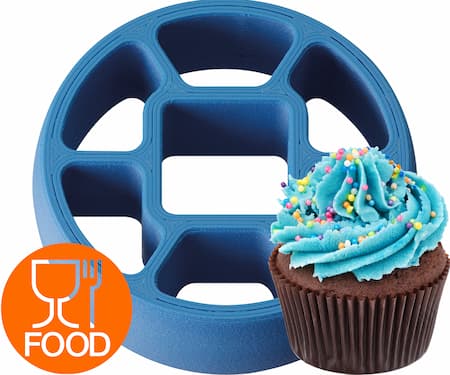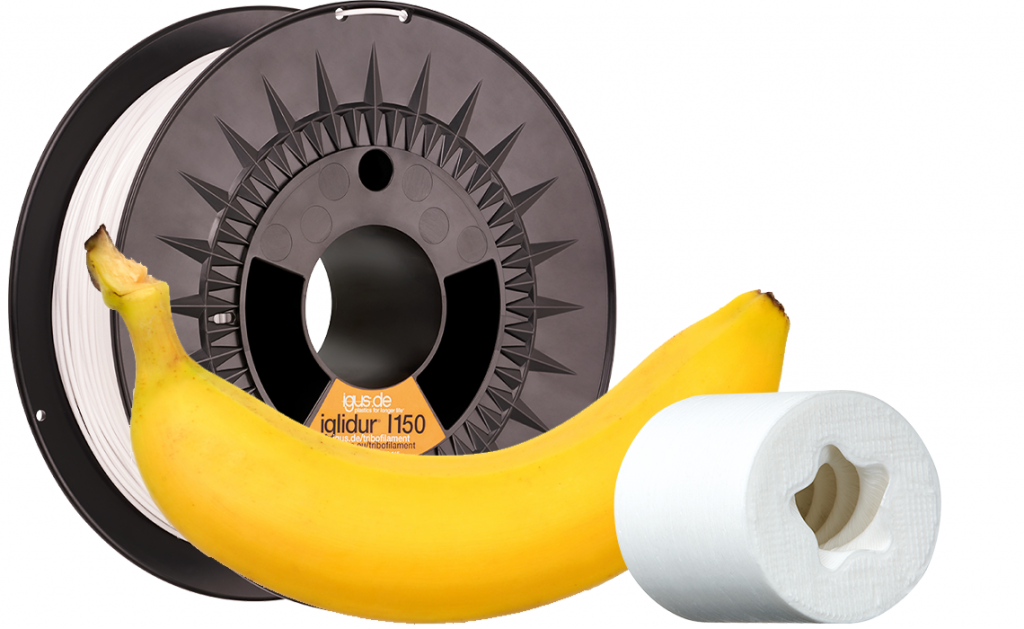Best practice: How do I get a food-safe component made by the 3D printer?
igu-blog-adm | 2. June 2021
An increasing number of companies are advertising food-safe materials and offering more and more materials for processing and packaging in the food industry. But the public eye is also increasingly focused on the plastics that come into contact with food and how they can potentially affect consumers’ health.
What exactly does food grade mean? On the European market, EU Directive 10/2011 regulates the food conformity of plastics. The standard deals with the requirements for plastic materials and objects intended to come into contact with food. The materials are tested under extremely unfavourable conditions of use that can be realistically anticipated. This involves a risk assessment with regard to the toxicity and possible migration of plastic elements or certain chemicals to the foodstuff. A migration limit specifies the maximum amount of a substance that may reach the foodstuff. In the American market, the FDA (U.S. Food & Drug Administration) regulates the permissibility of plastics for the food industry. Both standards include detailed lists on which the permissible substances can be found. In any case, it is worth taking a look at the Declaration of Conformity of the respective materials, where the specifications for the use of the respective substance are noted.
The right conditions for printing food-safe components
How can you 3D print a component that meets the requirements of EU 10/2011 and FDA? Here are a few tips on correct filament storage, printer maintenance and cleaning, and printer settings before printing. Our experience with the tribo-filament iglidur I150-PF serves as the basis for these tips. In order to certify this and other food-compliant tribo-filaments, printed components are subjected to the described migration tests by a testing laboratory.

Important requirements for processing the filament
The material should be stored in a dry place and protected from the environment. In addition, it should be taken out of the packaging protected from dust and it is essential that it is dried before printing. Drying prevents moisture contained in the filament from degrading the material and promoting air pockets when melting in the nozzle. This ensures that the surface finish and quality remain the same. Information on drying filaments can be found in the processing instructions. A good rule of thumb is a drying temperature that does not exceed the maximum application temperature of the plastic, but also does not damage the plastic reel. Drying of the filament is easily possible in a standard household fan oven, but also in a drying air oven specially designed for this purpose.
Another important requirement is regular maintenance and cleaning of the printer: Basically, all parts that come into contact with the filament should be free of residues. This includes in particular the extruder sprocket and the pressure nozzle. The desktop 3D printer manufacturer Ultimaker provides some cleaning routines for its devices that can also be applied to other devices. In addition to the sprocket and nozzle, a clean print bed is also essential; we recommend using a cleaned glass plate and either no adhesive or a food-grade adhesive.
- About the general cleaning routine for filament printers
- About the general cleaning routine for Ultimaker 3
Setting up the 3D printer correctly
The print settings should be selected in the slicing software, for example Ultimaker Cura, so that the surface of the object is as tight as possible. Among other things, this is achieved by lowering the printing speed and adapting the line width to the nozzle diameter. This allows unevenness in the component surface and reduces gaps in the cover layers. Before and during printing, the material must also be protected from dust, which is why a closed installation space is recommended.
Furthermore, we recommend not to produce food grade components in multi-material printing together with other, non-food grade materials, as mixing of the materials cannot be completely ruled out. Accordingly, the support material should either be food grade or the same material should be used as support material.
Food grade 3D printing at igus
With the tips mentioned here, igus has B. already been able to achieve food conformity according to EU 10/2011 several times, for example with iglidur I150. In doing so, we have also achieved food compliance for the manufactured 3D printed component, which is significant compared to other food-compliant 3D printed materials.

This blog post provides tips on food-compliant 3D printing polymer components, but is not a substitute for the necessary knowledge on the application side as to what the food compliance requirements are in a specific application. Depending on the application and requirement, tests on the specific component may also be necessary. In addition, we always recommend that you check the declaration of conformity carefully for the application, as there are major differences in approved foodstuffs, temperatures and the approved contact duration.
igus already implements more than 1,000 new applications per year in the food industry with a wide variety of products, such as plain bearing bushings, linear guides or 3D printed components.
Feel free to contact us if you have any questions: Click here for the contact form

